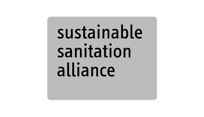Not recommended!

Open dumping is the uncontrolled disposal of waste in unauthorised areas causing health and environmental hazards.

Open dumping is waste disposal without control measures in locations unintended for waste management, such as natural landscapes, vacant lots, rivers and streams, drains and ditches, backyards, waste collection points (but outside the bins or containers) and illegal dumping sites. Open dumping is a consequence of a lack of proper waste collection, inadequate disposal infrastructure or even misuse of existing infrastructure. Open dumping creates severe environmental and public health risks such as soil and water contamination, air pollution, disease transmission and habitat destruction. Although it is practised in many places across the globe it is NOT a recommended solution and is unacceptable. As an open dump grows, waste removal and cleaning become a bigger and more complex task. The act of removing the waste must be accompanied by awareness and behaviour change campaigns to ensure the practice is phased out and waste does not re-accumulate.
Design Considerations
Open dumping has no design and should never be considered a possible solution. Nevertheless, depending on the location, the impact of open dumping can be less - or more - disastrous. Locations close to ground or surface water will severely contaminate these sources. For those located far away from any water bodies, the extent of the water pollution may be reduced or be less direct. The impact concerning distance is similar with respect to health risks to people: open dumping far from any residential areas, or where there is very limited exposure of people to waste, creates fewer or less direct health threats to people. The space use of an open dump depends on the amount of waste and the height of the waste pile.
Materials
Open dumping typically lacks infrastructure and should not be supported in any way with built infrastructure as this can accidentally signal acceptability.
Applicability
Open dumping is never an appropriate solution. Nonetheless, it might be a measure in the early stages of an emergency response when there are no other options; it might be the only way to temporarily concentrate waste in one place away from affected communities. However, humanitarian and development actors should always quickly plan for other safer disposal options such as controlled waste pits U.8 or controlled disposal sites/landfills U.9. If open dumping happens, it must only be for a very short period and be phased out and rehabilitated as soon as possible.
Operation and Maintenance
A challenge of open dumping is that once it starts, the site attracts others to openly dump at the same place. The practice then becomes the perceived solution and can lead to increased illegal dumping and further complications and difficulties in managing the waste. Openly dumped waste also requires laborious and costly clean-up activities combined with behaviour change at a later stage to prevent it from happening again X.6.
Health and Safety
Each year, up to one million people in low- and middle-income countries die from diseases linked to improper waste management practices, such as open dumping. The open dumping of waste creates several health and safety risks, including fostering mosquito breeding that can spread diseases, such as malaria and dengue fever. Fungal growth on the waste can cause respiratory problems and sharp objects like needles and broken glass can cause injuries. Additionally, leachate or waste carried by rain can enter and contaminate water supplies. Open dumping can also block waterways causing flooding W.6 and creating unsanitary conditions that increase health risks, particularly for children. Wind can disperse waste across the landscape, polluting and threatening distant locations and people. Scavenging and contact with waste increases the risk of diseases such as dysentery, diarrhoea and cholera. Livestock consuming dumped waste may become ill or ingest harmful plastics.
Costs
Open dumping appears to be low cost with minimal implementation and operational expenses, but this perception is incorrect. The impact of this practice generates significant direct and indirect costs, including health-related expenses from pollution and disease outbreaks, environmental clean-up costs, flood mitigation due to blocked drains, economic losses from decreased property values, reduced tourism and the expense of climate change mitigation from increased emissions X.8. These hidden costs, called externalities, often exceed any perceived savings, making open dumping economically unsound when all factors are considered. The financial burden typically falls on local governments, communities and individuals.
Social Considerations
Open dumping creates unsightly and unpleasant conditions that diminish community well-being. The practice may result from a lack of waste collection services. This is more common in low-income and marginalised areas, intensifying the vulnerability and disadvantages of these social groups. Often people are unaware of the health and environmental risks of open dumping, underscoring the need for education and awareness.
Key Decision Criteria
Input Products
Mixed Waste
Response Phase
Application Level
Management Level
Space Required
low
Technical Complexity
low
Objectives & Key Features
Undesirable way of getting rid of waste
Strength & Weakness
- No strengths
- Severe environmental pollution (soil, water, air) often combined with harmful open burning [U.11]
- Increased risk of drain clogging and floods
- Attracts disease vectors and pests, creating public health risks
- No waste recovery or resource management, leading to the loss of potentially valuable materials






